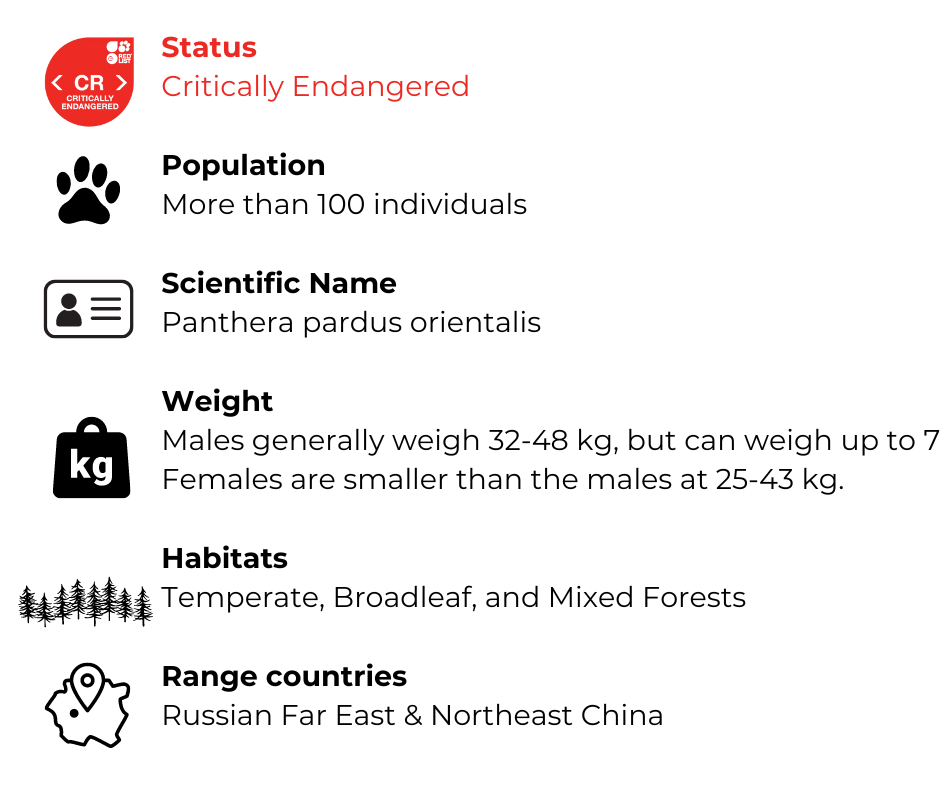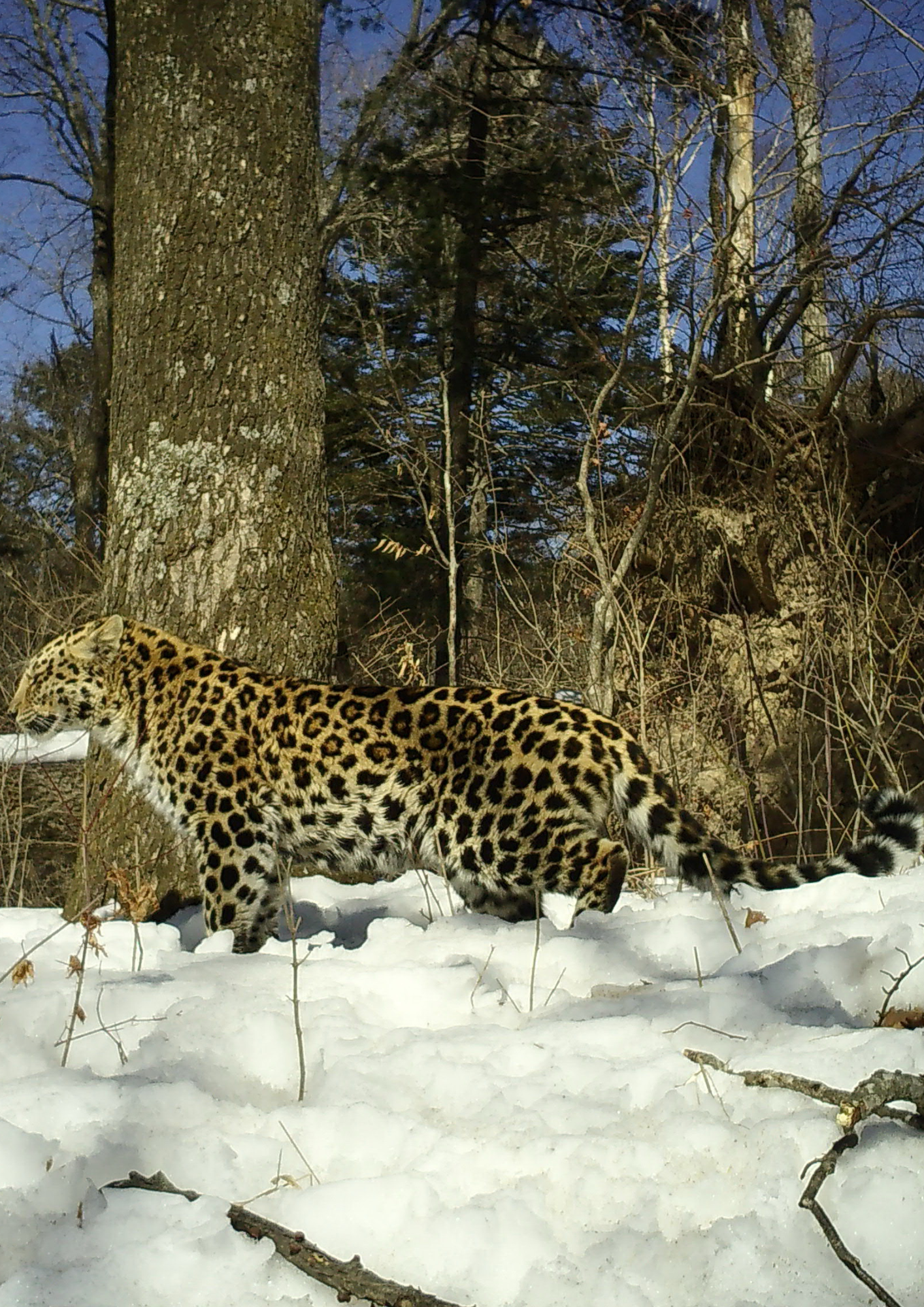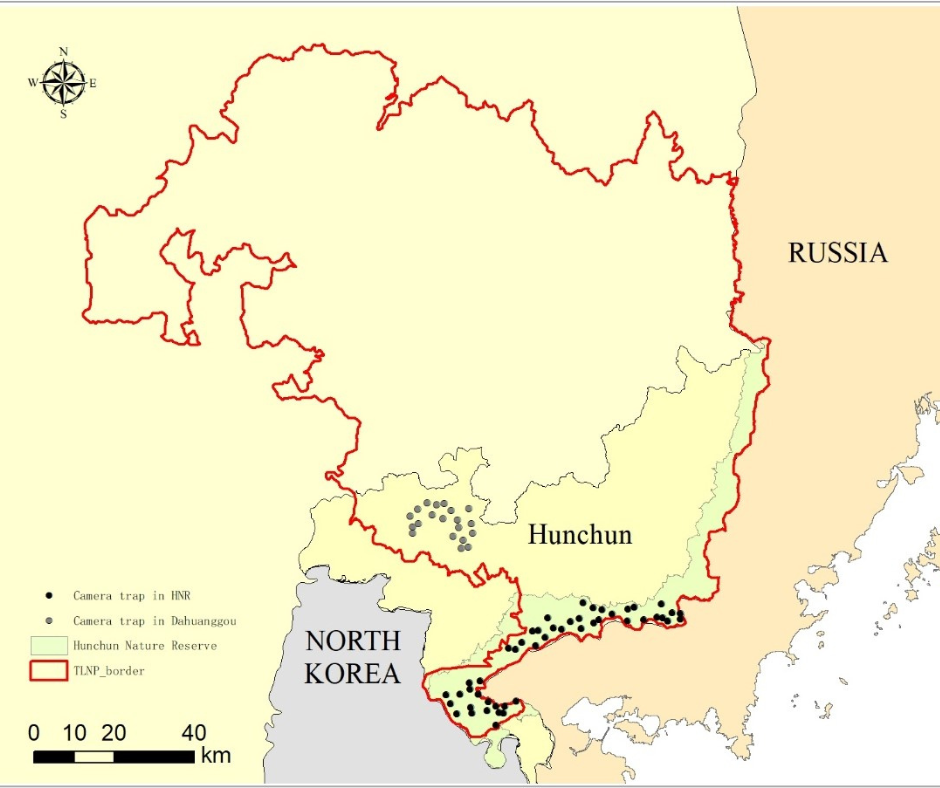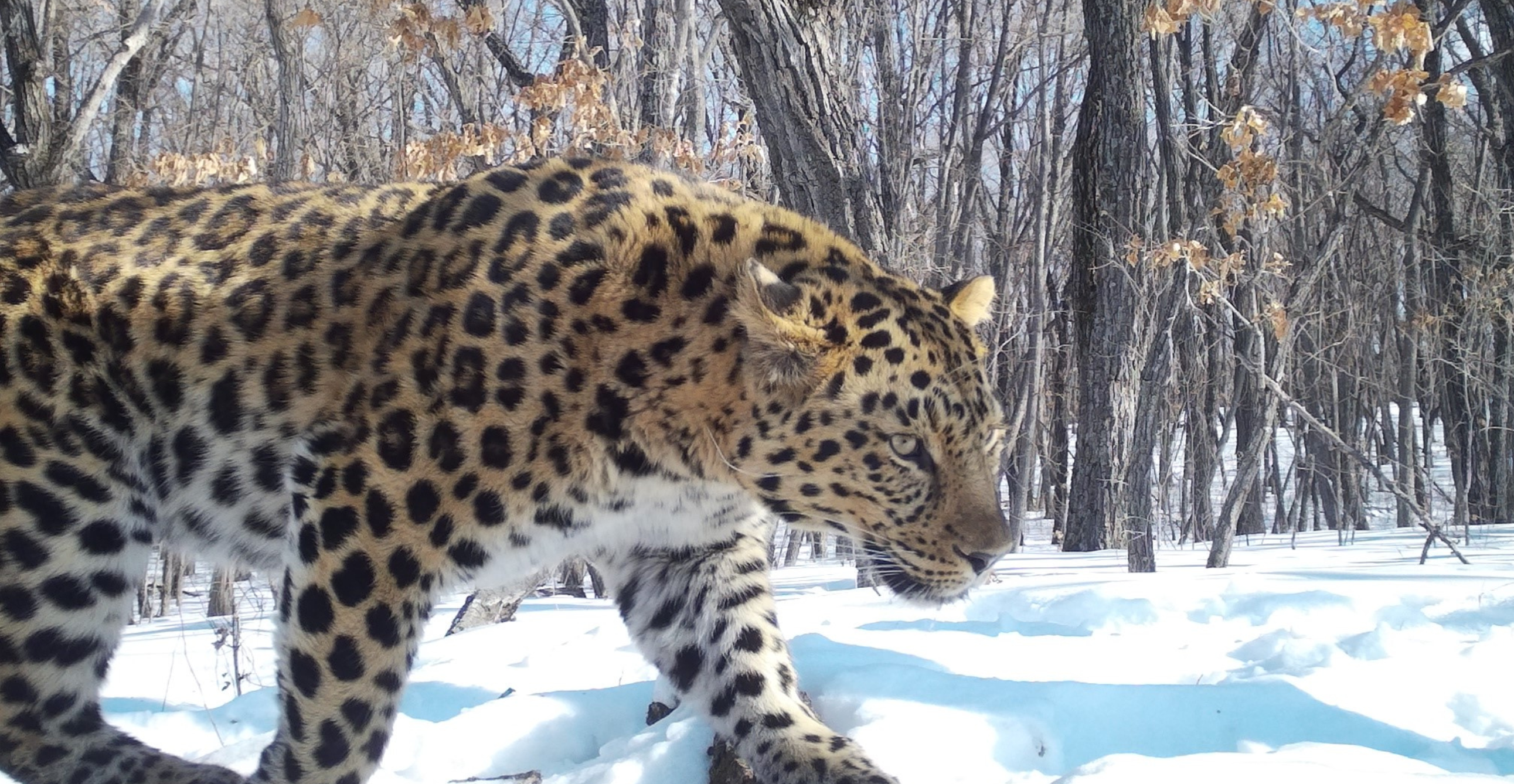The main threats to Amur leopards
Poaching: Poaching of both leopards and prey species is a serious threat. Forests in Southwest Primorye are relatively accessible, the area is more densely populated than most of the Russian Far East, and Russia has a hunting culture both for sport and for food. The two main cities of Primorski Krai – Vladivostok and Ussurisk – are only two or three hours drive away, so the leopard’s range holds some of the most popular hunting grounds for city residents.
Forest fires: These are a direct threat to Amur leopards as they reduce the animals’ natural forest habitat, replacing it with grasslands that leopards prefer to avoid.
Inbreeding: With a population that dwindled to 35 individuals only a few decades ago, this is a big concern and occasional camera trap evidence of white paws and short tails have been seen in the wild population that could reflect genetic mutation.
Development: Southwest Primorye is located close to the Russian borders with China and North Korea, making it an attractive area for infrastructure projects such as new railways, gas and oil pipelines and ports. In 2005 and 2006 ZSL and its local partner, Phoenix Fund led a successful international campaign against a plan to build an oil pipeline terminal on the coast of the Sea of Japan in the range of both the Amur leopard and tiger.
Disease: Diseases such as Canine Distemper Virus (CDV), are threatening the isolated and vulnerable Amur leopard population. We are working with scientific partners to understand exactly how this disease is contracted by leopards and its origins.
WildCats is working hard to reduce these threats by funding appropriate conservation projects and educating and informing people about the importance of the Amur leopard and tiger.
 FACTS
FACTS





